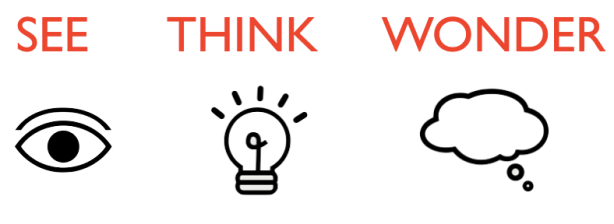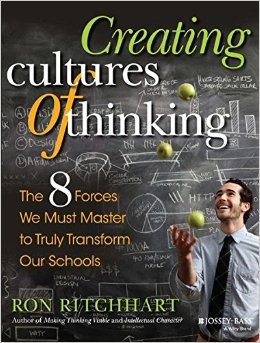New Year New Learning
Around 5 years ago I stumbled on the work of Ron Ritchhart through my Vice Principal Paul Brogden, an avid fan and user of the Thinking Routines. I devoured the book, “Visible Thinking” and pored over the HGSE website, specifically Project Zero, wondering how I had ever lived, let alone taught before knowing this! Testing out some of the routines was a start and, as most new learners, I began with one that fitted neatly into the curriculum: See, Think, Wonder. You can read all about the thinking routines at the Harvard site.

A team of 6 MS teachers from the UWCSEA Dover campus embarked on the online Making Visible Thinking Course from HGSE. We were an eclectic team of me (Art teacher and Head of Grade), a Head of English and Literacy coach, a Science teacher, a Language teacher (Head of Spanish), a Maths teacher (and MS Pastoral Vice Principal) and finally a Geography/Humanities teacher (and Curriculum Vice Principal). It was a great mix and we learnt so much about each other and the curriculum we have for our Middle School students.
The course is divided into 6 individual courses and each team has a coach who manages many other teams from around the world. We connected through the portal and comment and feedback on other teams which is wonderful. My art teacher friend from COETAIl, Matt McGrady first introduced the idea of the online course and he and a team from Abu Dhabi participated in this phase too.
The first course opened us up to the routines and helped us to navigate the site, sharing and posting about what we discussed as a team about creating a Culture of Thinking. Earlier this year, Ron Ritchhart published the book, “Creating Cultures of Thinking: The 8 Forces We Must Master to Truly Transform Our Schools” to help guide us in teaching students habits of mind for deep learning and to encourage collaboration and group learning to develop powerful communities.
Already, as a group we were collaborating online, meeting and chatting ad hoc and sharing experiences and ideas about our thinking as a result of the readings, videos and information shared. It was an exciting time. Time will always be a stumbling block for teachers and finding time to share and talk was always going to be challenging for 6 teachers in different areas of the school with varying constraints
As laid out below, the 8 forces that shape our classrooms are imperative in developing a rich learning environment:
Fostering a culture of thinking resonated with us as we help youngsters navigate the complex digital world they have been brought up in. So much is done for them; an answer is just a click away. When do they stop to think for themselves? Do we give them thinking time on class when we ask questions? Do you give students at least 7 seconds pause time for thinking when you pose a question to the group? Which of the cultural forces most resonate with you? It seems that this course opens our thinking and help us to encourage others to draw students away from their comfort zone and to enhance their critical and analytical thinking more.


[…] Visible Thinking […]